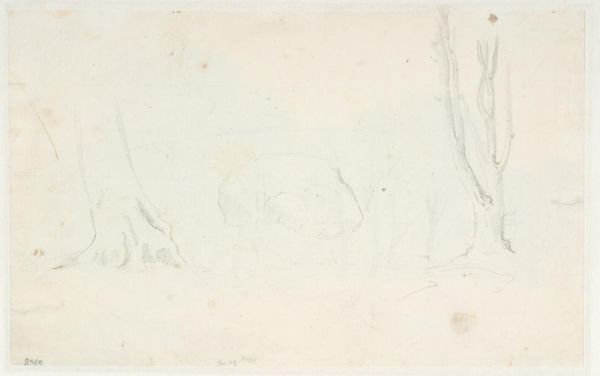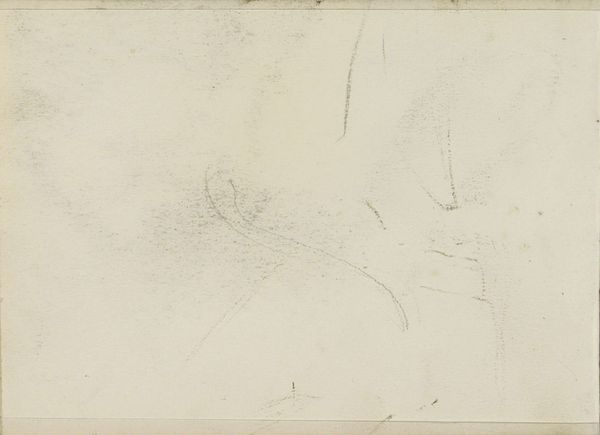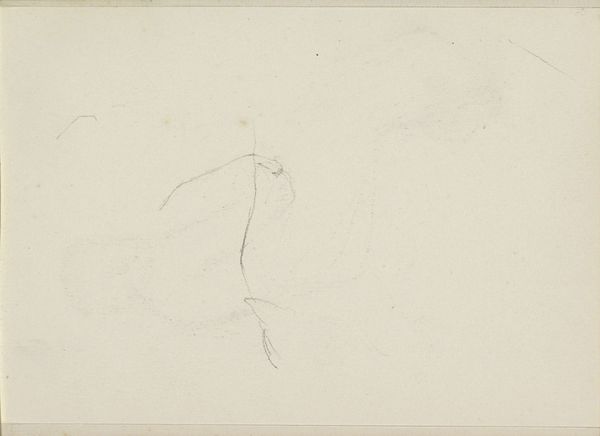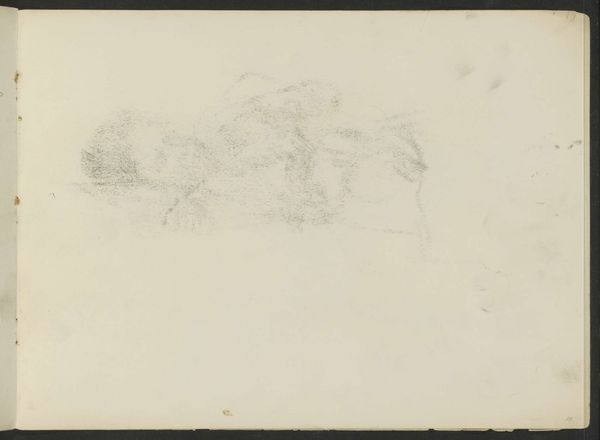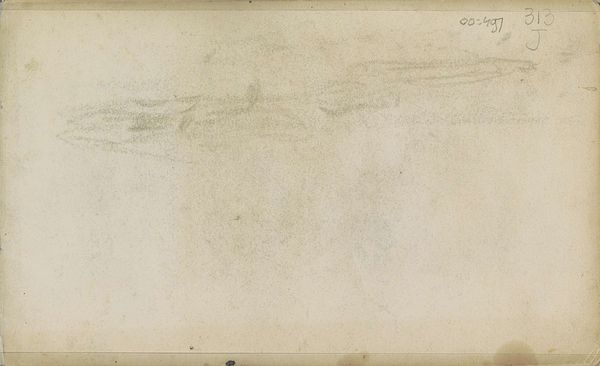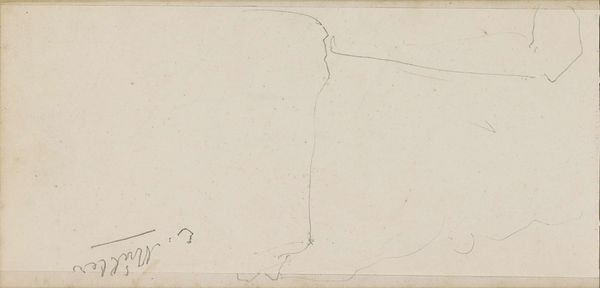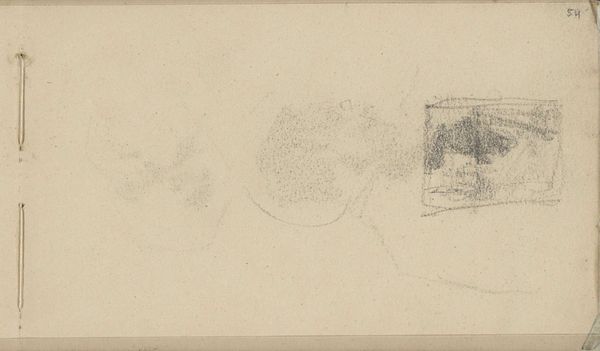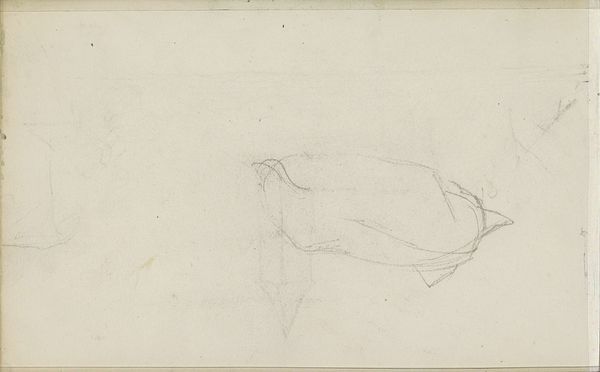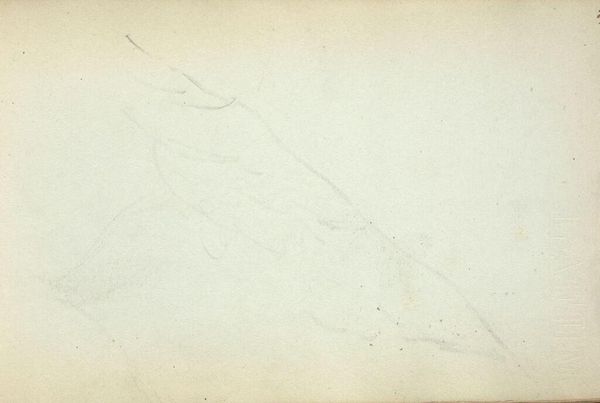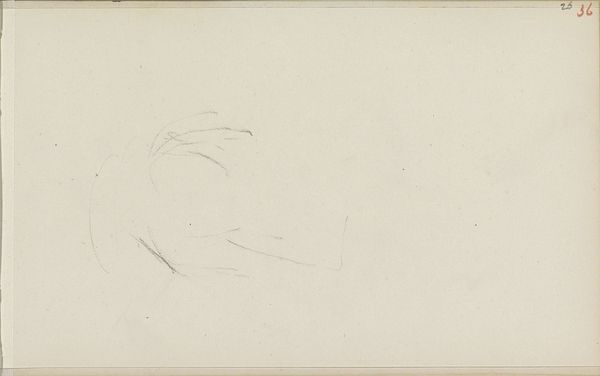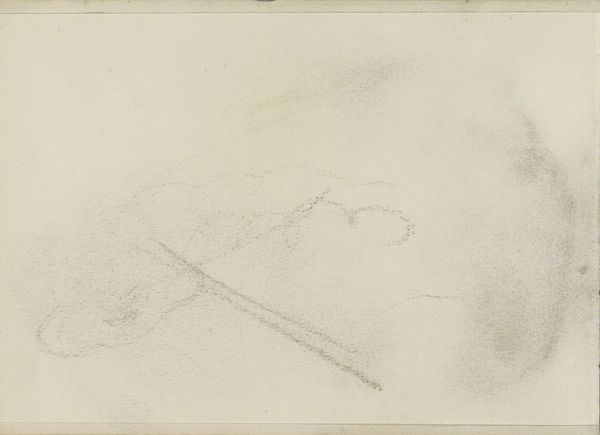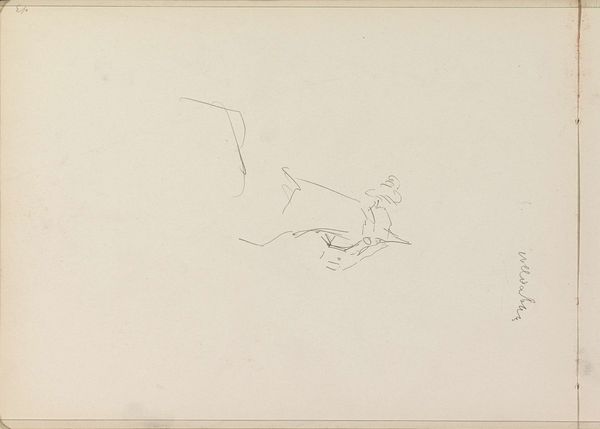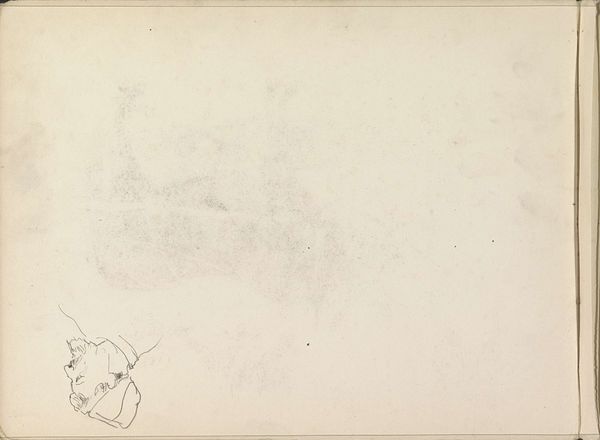
drawing, pencil
#
portrait
#
drawing
#
figuration
#
pencil
#
sketchbook drawing
#
realism
Dimensions: height 308 mm, width 208 mm
Copyright: Rijks Museum: Open Domain
Editor: This is "Studies van handen" by Jozef Israëls, made sometime between 1834 and 1911. It's a pencil drawing, and currently held at the Rijksmuseum. I’m immediately struck by how delicate the rendering of the hands is, almost like a whisper. What can you tell us about this work? Curator: Indeed. The pencil work presents an economy of line which prioritizes form over extraneous detail. We can see how the artist has focused on the shapes and structure, almost anatomically. Note how each study focuses on a particular aspect, whether it be the articulation of the fingers or the suggestion of depth through shading. What compositional elements stand out for you? Editor: I notice how the hands are positioned seemingly at random on the page, and the stark contrast of detailed rendering versus the empty, undefined space. The lack of context creates a sense of quietness, a removed observation. Curator: Precisely. The work asks us to look intensely at the hand, considered devoid of external meaning. How do you consider the varying intensities of shading? Is it simply to articulate three-dimensionality or is there an expression beyond the physical? Editor: It seems the areas of strongest contrast define the structure itself; how bone and muscle dictate form. The softer shadows feel more like atmosphere, less defined, and very subtle. Is the softness a technique intended to achieve certain mood? Curator: We can analyze it on a formal level by how it invites closer looking, not necessarily projecting overt sentiments, rather making one contemplate the line weight itself and its ability to depict three-dimensional form. I find its openness inviting; what do you think about the artist's focus and their use of positive and negative space? Editor: I'm surprised how expressive it feels despite its simplicity and the emptiness around the hands. This conversation has revealed subtleties that would likely have been overlooked without closer analysis of shape, form and line. Curator: This exercise encourages one to engage with the work on its own terms. The formal language offers an entry point that transcends mere representation.
Comments
No comments
Be the first to comment and join the conversation on the ultimate creative platform.
